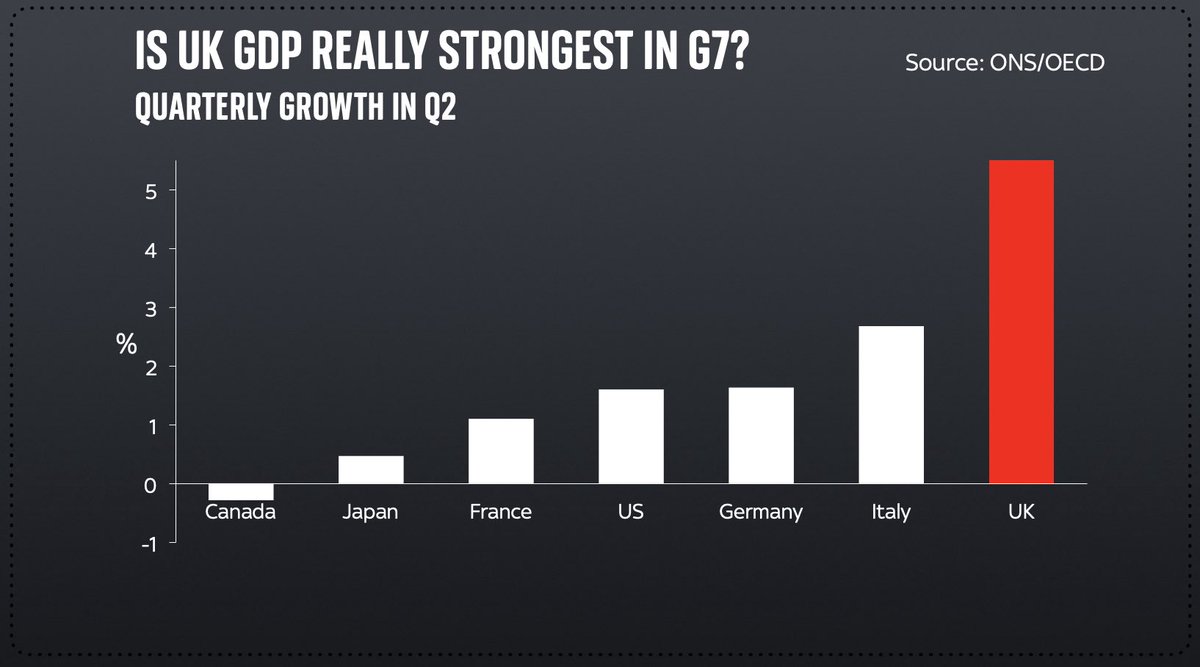
BLOG: The $130 trillion climate finance figure bandied around at #COP26 today is utterly meaningless.
It is “numberism” - an attempt to deploy big numbers as symbols rather than data.
Here’s my attempt to explain what’s really going on (excerpt below): edmundconway.com/the-curse-of-b…
It is “numberism” - an attempt to deploy big numbers as symbols rather than data.
Here’s my attempt to explain what’s really going on (excerpt below): edmundconway.com/the-curse-of-b…

Given there are so many numbers flying around, let’s consider what they actually mean.
First @MarkJCarney’s $130 trillion.
You might, from the noises made at #COP26, have been left with the impression that this is a new fund which will help combat climate change.
It’s not.
First @MarkJCarney’s $130 trillion.
You might, from the noises made at #COP26, have been left with the impression that this is a new fund which will help combat climate change.
It’s not.
It’s not an actual pot of money dedicated to combatting climate change.
Instead it’s more like saying: here’s how incredibly rich these financial firms which have now signed our climate change pledge are.
Might help divert more money to energy transition. But not quite the same.
Instead it’s more like saying: here’s how incredibly rich these financial firms which have now signed our climate change pledge are.
Might help divert more money to energy transition. But not quite the same.
Nor is it true, as the press release claims, that the $130tr represents a 25-fold increase in commitments to net zero.
First because these aren’t really “commitments” (see above) but net assets figs.
Second because it implies these firms weren’t committed to net zero pre-Carney
First because these aren’t really “commitments” (see above) but net assets figs.
Second because it implies these firms weren’t committed to net zero pre-Carney

This is patent nonsense.
The vast majority of the 450 firms who’ve signed up to the GFANZ pledge (the $130tr thing) had pre-existing net zero plans.
They were already converted. But they’ve now signed up to this collective kitemark.
Great. But not a Damascene conversion.
The vast majority of the 450 firms who’ve signed up to the GFANZ pledge (the $130tr thing) had pre-existing net zero plans.
They were already converted. But they’ve now signed up to this collective kitemark.
Great. But not a Damascene conversion.
Consider Blackrock. World’s biggest asset manager.
Arguably they’ve done more than anyone else to galvanise investors to take net zero seriously. Larry Fink advocated this in a Jan 2020 letter.
That was long before GFANZ existed. Yet they only signed up to it quite recently.
Arguably they’ve done more than anyone else to galvanise investors to take net zero seriously. Larry Fink advocated this in a Jan 2020 letter.
That was long before GFANZ existed. Yet they only signed up to it quite recently.
My point is not that these kinds of commitments aren’t important. They are. But take with an enormous spoonful of salt the hyperbole about the big numbers and about the scale of achievement around #COP26.
This is a formalisation of where the financial sector was already heading.
This is a formalisation of where the financial sector was already heading.
Anyway, do read my blog on this for more.
My concern is it’s yet another example of how politicians use numbers to bludgeon us rather than enlighten us.
I’ll do something on the other big number, the $100bn climate finance pledge, later edmundconway.com/the-curse-of-b…
My concern is it’s yet another example of how politicians use numbers to bludgeon us rather than enlighten us.
I’ll do something on the other big number, the $100bn climate finance pledge, later edmundconway.com/the-curse-of-b…
• • •
Missing some Tweet in this thread? You can try to
force a refresh
















